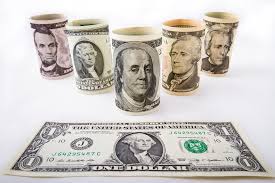Dollar falls as vaccine progress boosts risk appetite; sterling up more than 1%

The dollar fell at the open of European trade on Monday, with progress on COVID-19 vaccines lifting risk appetite, while the British pound rose more than 1% after Britain and the European Union agreed on Sunday to carry on with Brexit negotiations.
The United States launched its first shipments of the COVID-19 vaccine to distribution centres on Sunday, raising hopes for a swift recovery from the global coronavirus-induced economic downturn.
The dollar was down around 0.2% against a basket of currencies at 90.621 at 0804 GMT, staying within December’s ranges but not far from its lowest since 2018.
The risky Australian and New Zealand dollars were also up, close to their strongest since 2018. At 0821 GMT, the Aussie – a liquid proxy for risk – was up 0.4% versus the dollar at 0.75655.
U.S. dollar net short positioning in the latest week climbed to its highest since late September, according to calculations by Reuters and Commodity Futures Trading Commission data released on Friday.
“The dollar is starting the week on the backfoot as risk appetite remains fairly upbeat on the back of vaccine roll-out news, lingering hopes around a U.S. fiscal stimulus package and some optimism on Brexit negotiations,” wrote ING strategists in a note to clients.
A $908 billion bipartisan COVID-19 relief plan, which could be introduced in the U.S. Congress as early as Monday, will be split into two packages in a bid to win approval, a person briefed on the matter said.
BREXIT
Brexit negotiations continue to command the attention of market participants, with sterling up 1.2% against the dollar at 0822 GMT, after Britain and the EU agreed to press on with difficult Brexit talks despite the expiry of another self-imposed deadline on Sunday. It was also up around 0.9% against the euro.
Implied volatility gauges with a one-week maturity showed that expectations for price swings in dollar-sterling and euro-sterling dipped down slightly from the eight-month highs hit on Friday.
“Despite being a very close call at this stage, we still think a deal is the most likely scenario and therefore expect a GBP rally to materialise in the next two weeks,” ING strategists said.
“Still, the currency reaction function is asymmetrically skewed to the downside as, despite last week’s drop, GBP is still pricing a good probability of a deal,” they added.
The euro rose around 0.3% versus the dollar, at $1.2148 at 0834 GMT, as new restrictions on activity in Europe – including a strict lockdown in Germany – had limited impact on market sentiment.
Elsewhere, China’s yuan rose against the dollar as market participants shrugged off an attempt by the Chinese central bank to stem yuan appreciation by reducing capital inflows.
At 0831 GMT, the dollar was down around 0.3% on the day versus the offshore yuan, at 6.5188.
For the week ahead, market participants will focus on a series of central bank meetings, including the U.S. Federal Reserve on Wednesday, which is expected to maintain dollar weakness.
“We expect the Fed’s communication to put much more emphasis on recent downside momentum heading into year end and risks to the economy over the short-term even as Fed’s forecasts for the economy this year will be revised higher,” wrote MUFG FX strategist Lee Hardman in a note to clients.
“A strong commitment to maintain substantial stimulus into next year should help to keep the US dollar on a weaker footing going forward,” he added.

